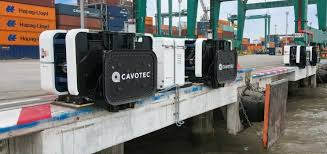What technologies are being implemented at the Port of San Antonio?

What technologies are being implemented at the Port of San Antonio?
What technologies are being implemented at the Port of San Antonio? The Port of San Antonio is embracing a range of innovative technologies to enhance operations and improve efficiency.
As the maritime industry evolves, these technologies play a crucial role in maintaining competitiveness.
Here’s an overview of some key technologies being implemented at the Port of San Antonio.
Automated Cargo Handling Systems
Automated cargo handling systems are revolutionizing operations at the port.
These systems utilize advanced robotics and machinery to streamline loading and unloading processes.
Automation reduces the time required for cargo transfer, enhancing overall efficiency.
By minimizing human error, these technologies also improve safety in the working environment.

Data Analytics and IoT
Data analytics and the Internet of Things (IoT) are being leveraged to optimize port operations.
IoT sensors monitor equipment and environmental conditions in real-time.
Data collected helps in predicting maintenance needs, reducing downtime, and improving resource allocation.
Analytics also support decision-making processes by providing insights into operational performance.
Blockchain Technology
Blockchain technology is being explored for improving transparency and security in transactions.
This decentralized ledger can enhance the tracking of cargo movements and documentation.
By providing a secure, tamper-proof record, blockchain reduces fraud and errors.
This technology facilitates smoother customs processes and strengthens supply chain integrity.
Smart Port Systems
Smart port systems integrate various technologies to create a cohesive operational framework.
These systems enable real-time monitoring and control of port activities.
Centralized dashboards provide operators with valuable insights into traffic, scheduling, and resource utilization.
Implementing smart systems enhances responsiveness and improves overall operational efficiency.
Drones and Unmanned Aerial Vehicles (UAVs)
Drones are being used for various applications at the Port of San Antonio.
They assist in surveying, monitoring cargo, and inspecting infrastructure from above.
Drones provide real-time data, enhancing safety and operational awareness.
Their versatility allows for quick assessments of large areas, streamlining inspections.
Electric and Hybrid Equipment
The port is investing in electric and hybrid equipment to reduce its carbon footprint.
This includes electric cranes, forklifts, and vehicles used for transporting goods.
Adopting cleaner technologies aligns with sustainability goals and regulatory requirements.
Transitioning to electric equipment enhances operational efficiency while minimizing emissions.
Enhanced Communication Systems
Advanced communication systems are being implemented to facilitate coordination among stakeholders.
These systems improve the flow of information between shipping lines, customs, and logistics providers.
Efficient communication is crucial for managing schedules and reducing delays.
By enhancing collaboration, the port can streamline operations and improve service quality.
Cybersecurity Measures
With the increasing digitization of port operations, cybersecurity measures are critical.
The port is implementing advanced security protocols to protect its information systems.
Robust cybersecurity frameworks help safeguard against potential threats and breaches.
Maintaining secure systems is vital for operational integrity and stakeholder confidence.
The Port of San Antonio
The Port of San Antonio is at the forefront of technological innovation in the maritime industry.
From automated systems and IoT applications to blockchain and drones, these technologies enhance efficiency and safety.
By adopting advanced solutions, the port positions itself as a competitive player in global trade.
Continued investment in technology will ensure that the Port of San Antonio meets future challenges effectively!





Leave a Reply